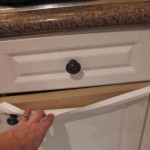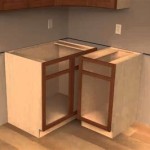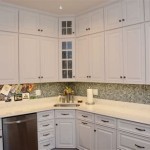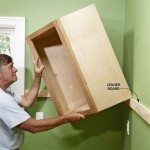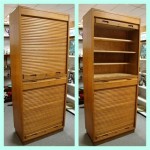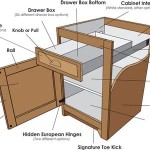What is the Best Wooden Flooring for Kitchens?
Selecting the optimal wooden flooring for a kitchen environment requires careful consideration of various factors, including durability, moisture resistance, maintenance requirements, and aesthetic appeal. The kitchen, being a high-traffic area prone to spills and temperature fluctuations, demands flooring that can withstand these challenges while complementing the overall design of the home. Choosing the right wood species, finish, and installation method is essential for achieving a balance between functionality and visual harmony.
The "best" wooden flooring for a kitchen is subjective and contingent upon individual preferences, budget constraints, and lifestyle. However, certain types of wood and installation techniques are consistently recommended due to their inherent properties and proven performance in demanding environments. This article will delve into the characteristics of different wood flooring options suitable for kitchens, outlining their advantages and disadvantages to assist homeowners in making an informed decision.
Engineered Hardwood Flooring: A Practical Choice
Engineered hardwood flooring presents a compelling alternative to solid hardwood, particularly for kitchens. Its construction consists of a thin layer of real hardwood veneer bonded to a core of multiple layers of plywood or high-density fiberboard (HDF). This multi-layered structure provides enhanced dimensional stability, making it less susceptible to warping, expanding, or contracting in response to changes in humidity and temperature – conditions commonly encountered in kitchens.
The top veneer of engineered hardwood is available in a wide range of wood species, allowing homeowners to achieve the desired aesthetic without the vulnerabilities associated with solid hardwood. From classic oak and maple to exotic options like Brazilian cherry and tigerwood, the visual possibilities are extensive. The thickness of the veneer also influences the lifespan of the flooring; thicker veneers can be sanded and refinished multiple times, extending the flooring's longevity.
Engineered hardwood’s stability makes it suitable for installation over various subfloors, including concrete, which is common in many modern homes. Its compatibility with radiant heating systems is another advantage, providing comfortable warmth underfoot during colder months. However, it is crucial to select a product with a high-quality core and a durable finish to ensure long-term performance in a kitchen environment. The finish acts as a protective barrier against moisture and stains; therefore, a resilient polyurethane or aluminum oxide finish is recommended.
While engineered hardwood is more moisture-resistant than solid hardwood, it is not completely waterproof. Spills should be cleaned promptly to prevent water from seeping into the seams and damaging the core. Regular cleaning with a damp mop and a pH-neutral cleaner is essential for maintaining its appearance and preventing the buildup of dirt and grime.
Solid Hardwood Flooring: Classic But Requires Careful Consideration
Solid hardwood flooring exudes timeless elegance and offers a natural warmth that can enhance the ambiance of any kitchen. Its durability and ability to be refinished multiple times contribute to its longevity, making it a worthwhile investment for homeowners who prioritize aesthetics and long-term value. However, solid hardwood's susceptibility to moisture and temperature fluctuations necessitates careful consideration before installing it in a kitchen.
Certain hardwood species are better suited for kitchens than others. Oak, particularly white oak, is a popular choice due to its inherent hardness, durability, and water resistance. Maple is another durable option, known for its smooth grain and light color. Harder species like hickory and Brazilian walnut offer exceptional resistance to dents and scratches, making them ideal for high-traffic kitchens.
The finish applied to solid hardwood flooring plays a crucial role in its ability to withstand the demands of a kitchen. Polyurethane finishes provide a durable, water-resistant surface that can withstand spills and everyday wear and tear. Oil-based finishes offer a more natural look and feel but require more frequent maintenance. The finish should be professionally applied to ensure a uniform and lasting protective layer.
Proper installation is paramount for solid hardwood flooring in a kitchen. The subfloor must be perfectly level and dry to prevent warping or cupping. A moisture barrier should be installed to protect the wood from moisture migration from the subfloor. It is advisable to consult with a professional installer to ensure that the flooring is installed correctly and that all necessary precautions are taken to mitigate the risks associated with moisture exposure.
Despite its inherent beauty and durability, solid hardwood flooring requires meticulous maintenance in a kitchen. Spills should be cleaned immediately, and excessive moisture should be avoided. Area rugs can be strategically placed in high-traffic areas and near sinks to protect the flooring from wear and water damage. Regular sweeping and mopping with a damp mop and a wood-floor cleaner are essential for maintaining its appearance.
Wood-Look Alternatives: Luxury Vinyl Plank (LVP)
While not technically wooden flooring, luxury vinyl plank (LVP) flooring has become a compelling and increasingly popular alternative for kitchens due to its exceptional durability, water resistance, and realistic wood-look aesthetics. LVP is constructed from multiple layers of synthetic materials, including a waterproof core, a printed design layer that mimics the appearance of real wood, and a protective wear layer that resists scratches, stains, and fading.
The primary advantage of LVP is its superior water resistance, making it an ideal choice for kitchens where spills are inevitable. Unlike wood flooring, LVP will not warp, swell, or rot when exposed to moisture. Its waterproof core prevents water from penetrating the subfloor, minimizing the risk of mold and mildew growth. This makes LVP a particularly suitable option for homes with young children or pets, or for homeowners who simply prefer a low-maintenance flooring solution.
LVP is available in a vast array of styles, colors, and textures that convincingly replicate the look of different wood species, including oak, maple, hickory, and even exotic hardwoods. Advanced printing technology and embossed textures create a realistic wood-grain appearance that is often difficult to distinguish from real wood. This allows homeowners to achieve the desired aesthetic without the associated costs and maintenance requirements of natural wood flooring.
LVP is also known for its ease of installation. Many LVP products feature a click-lock system that allows for easy floating installation, eliminating the need for glue or nails. This makes LVP a suitable option for DIY projects, saving homeowners on installation costs. However, it is still recommended to ensure that the subfloor is level and clean before installing LVP to ensure a smooth and stable surface.
The maintenance of LVP is incredibly simple. Regular sweeping and mopping with a damp mop and a mild detergent are sufficient to keep it clean and looking its best. The protective wear layer resists scratches and stains, minimizing the need for frequent polishing or refinishing. LVP is also a comfortable flooring option underfoot, providing a slightly softer and warmer feel than tile or stone.
While LVP offers numerous advantages, it lacks the natural warmth and character of real wood. It also does not add the same level of resale value to a home as hardwood flooring. However, for homeowners who prioritize practicality, durability, and affordability, LVP represents a compelling alternative that provides the look of wood without the associated drawbacks.

What Is The Best Hardwood Flooring For Kitchens And Why Impressions Collection

Best Engineered Hardwood Flooring For Your Kitchen Dining Room

Hardwood Flooring In The Kitchen Pros And Cons Coswick Com

The Best Kitchen Floor Tile Vs Hardwood

5 Best Laminate Flooring For Your Kitchen

The Best Kitchen Floors On A Budget Flooring

5 Ideas For The Best Kitchen Flooring
:strip_icc()/101963918-c6dec2c8e0c841d8a1ea35a05150d558.jpg?strip=all)
How To Pick The Best Wood For Your Kitchen Floor

Best Flooring For Kitchens Kitchen Ideas Tapi

Hot Flooring For Kitchens Is Wood But What About Water The Seattle Times
Related Posts

